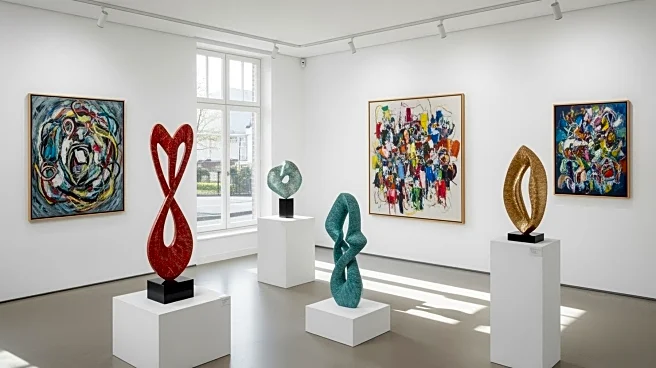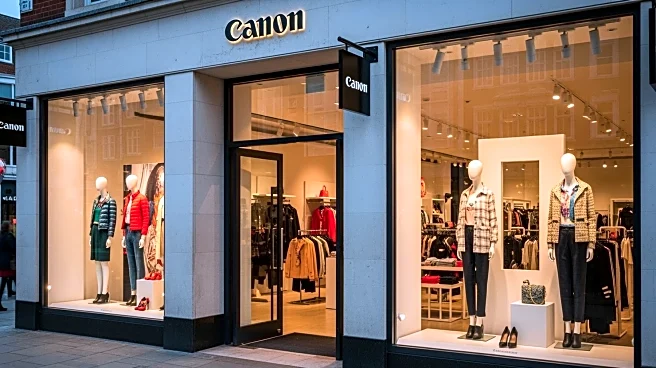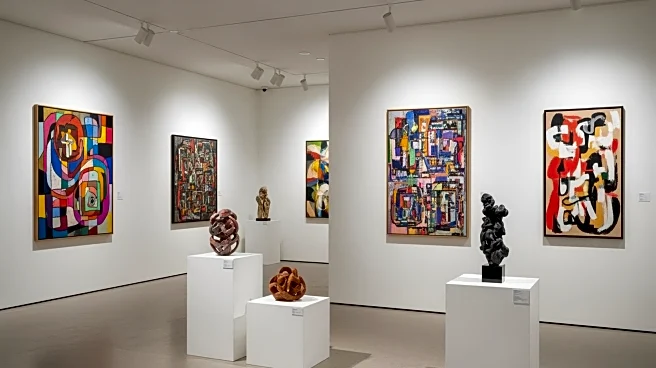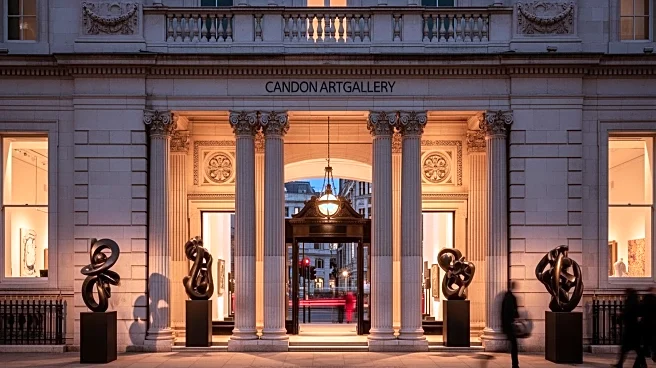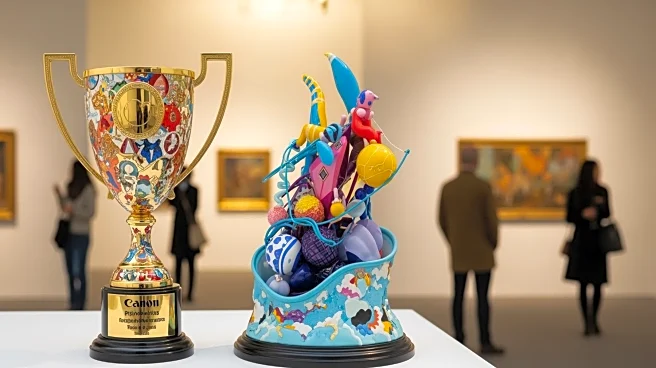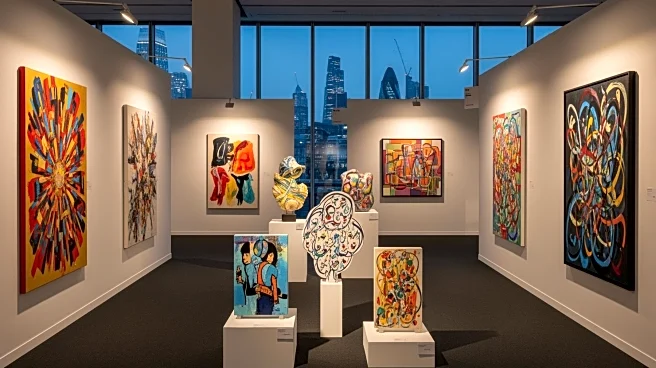What's Happening?
During Frieze London, the Tate Frieze Fund, supported by a private patron, allocated £150,000 for the acquisition of artworks by mid-career UK-based women artists. The fund acquired Lubna Chowdhary's ceramic piece 'Assemble' and Barbara Walker's life-sized
drawing 'The End of the Affair'. Additionally, Alex Margo Arden received the inaugural Nicoletta Fiorucci Foundation Prize for her work 'Accounts', a conglomeration of museum mannequins. The Arts Council Frieze Acquisitions Fund expanded to £90,000, purchasing works by various artists including Sarah Ball and Olu Ogunnnaike. The Camden Art Centre Emerging Artist Prize was awarded to Bogdan Ablozhnyy, while Adham Faramawy won the Circa 2025 prize for his film addressing the migration crisis.
Why It's Important?
The proliferation of prizes and awards during Frieze London highlights the growing recognition and support for artists, particularly women, in the UK art scene. These acquisitions and awards not only enhance the visibility of the artists but also contribute to the diversification of collections in major institutions like Tate. The focus on challenging commercialisation and supporting emerging artists reflects a shift towards valuing artistic innovation and social commentary. This trend may influence future funding and acquisition strategies, encouraging more inclusive and diverse representation in the art world.
What's Next?
The acquired works will be integrated into the collections of institutions like Tate and the Walker Art Gallery, potentially influencing future exhibitions and public engagement. The recognition of artists through these prizes may lead to increased opportunities for solo exhibitions and commissions, further advancing their careers. The focus on addressing social issues, such as the migration crisis, through art may inspire more artists to engage with contemporary global challenges, fostering a dialogue between art and societal change.
Beyond the Headlines
The emphasis on supporting artists who challenge commercialisation and address social issues suggests a broader cultural shift towards valuing art as a medium for social critique and change. This could lead to a reevaluation of the role of art in society, encouraging institutions to prioritize works that provoke thought and inspire action. The integration of digital and interactive elements in art, as seen in Faramawy's film, may also drive innovation in how art is experienced and understood.
